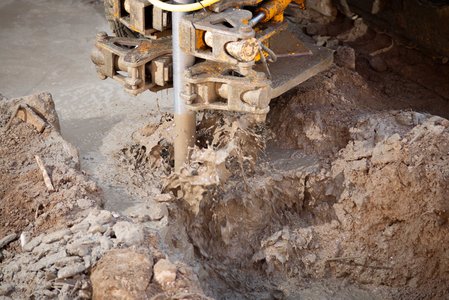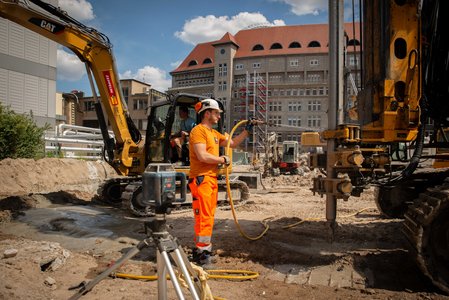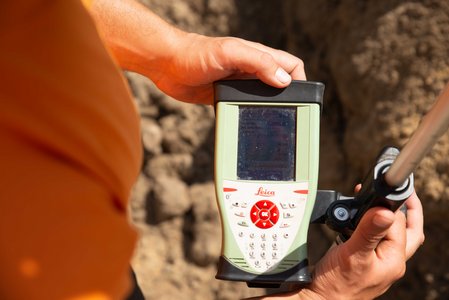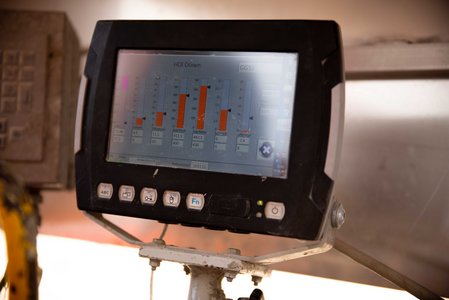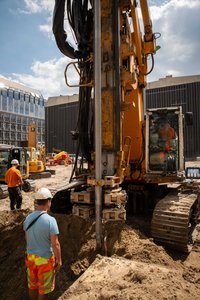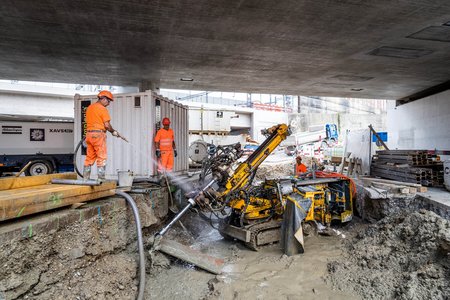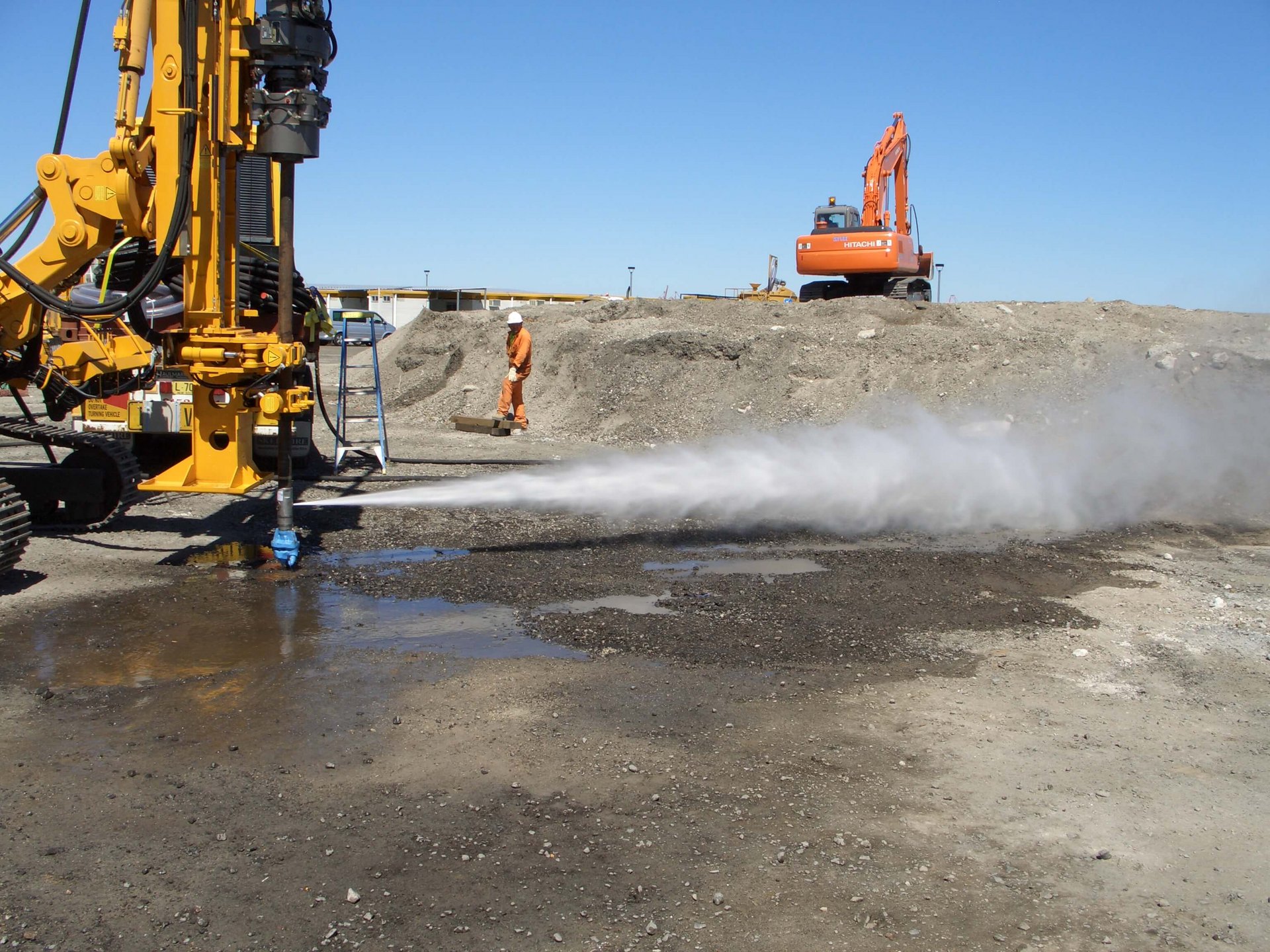
WE ARE WORKING ON IT WITH HIGH PRESSURE!
Jet grouting
The nozzle jet method (formerly also called high pressure injection HDI) can be used in the entire spectrum of soils, from clay to coarse gravel. The basic idea of the nozzle jet method is to loosen the structure of the existing soil with a high-pressure nozzle jet and to exchange or mix it with a cement suspension. The aim of this method is to achieve a consolidation or sealing of the soil by means of an "earth concrete" or "soil-cement body" that is largely independent of the structure of the foundation soil.

Nozzle jet process
To produce a DSV body, the first step is to drill down to the intended depth using a high-pressure injection rod, whereby the drilling tool and mud are selected according to the type of soil. In the case of dense, cohesive and hard soils, it may be necessary to pre-cut with water while drilling in order to achieve a larger diameter of the injection column and to optimise the consumption of cement slurry. During the subsequent pulling of the drill pipe, the injection material is squeezed out with pressures of approx. 400 bar from nozzles attached to the lower edge and the soil is cut open. The jet speed is up to 200 m/s. As a result of the rotation and the upward movement of the drill pipe, a homogeneous cylindrical body is created from a mixture of soil and injected cement suspension. The shape and size of the resulting bodies can be influenced depending on the surrounding soil by selecting the appropriate cutting jet pressure, the extraction speed and the rotation speed of the drill rods. Excess soil-water-cement mixture emerges via the borehole annulus and is collected, collected and removed there. The building materials used in the jet grouting process - water, cement, possibly bentonite and the existing soil material - are of natural origin and behave as neutrally as possible in the soil and groundwater. The jet-blasting bodies can be produced vertically, horizontally or at any inclination.
UNSERE DIENSTLEISTUNGEN
- DSV-Dichtblöcke
- DSV-Dichtsohlen
- DSV-Unterfangungen
- Reichweitenmessungen
- Probesäulen
- Säulenplan
- Leckageerfassung


